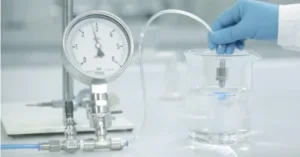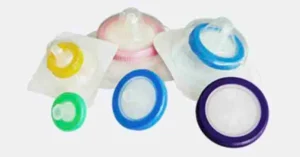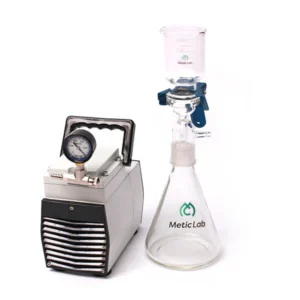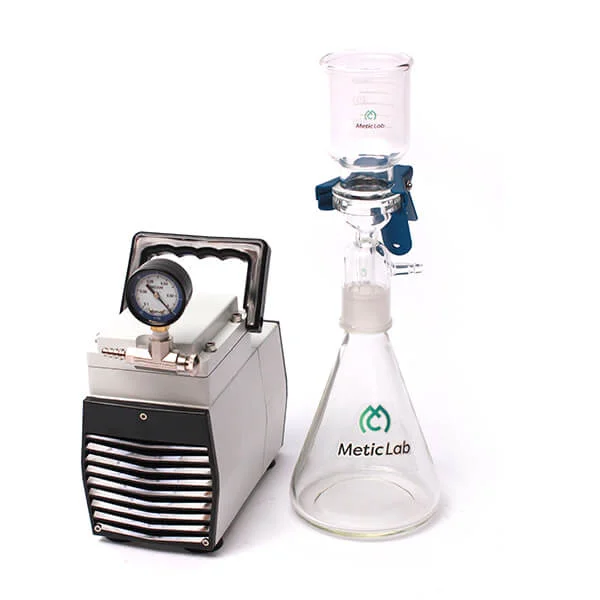
In one of my investigations, I learned an incredible fact about vacuum filtration systems and realized how crucial this method is for purification, extraction, and distillation. Keep reading if you’d like to learn more about this!
WHAT IS A VACUUM FILTRATION SYSTEM
A vacuum filtration system (also known as suction filtration) is a laboratory procedure used to separate a solid from a liquid. The solid is often dissolved in a solution that is either unsaturated, permeated, or supersaturated, depending on how much solid is present in the liquid. While saturated solutions are typically not clear and consist of sinking particles, unsaturated solutions cannot dissolve any additional solids but are generally clear.

VACUUM FILTRATION SYSTEM
Filtration in general is the removal of solid particles from a mixture that contains both solid and liquid components. The solid material here is known as the residue while the liquid substance is known as filtrate. For this article, we will be focusing more on the Vacuum filtration system.
Vacuum filtration
A vacuum pump is used to move the liquid through the filter, separating the solid from the liquid. Most times, recrystallized solids (particles that have been recovered through heating after being dissolved in water or other solvents) are collected through vacuum filtration. The filter paper’s pore size has a significant impact on how much solid is grasped during vacuum filtering. Larger pores will produce less material, while smaller pores will produce more.
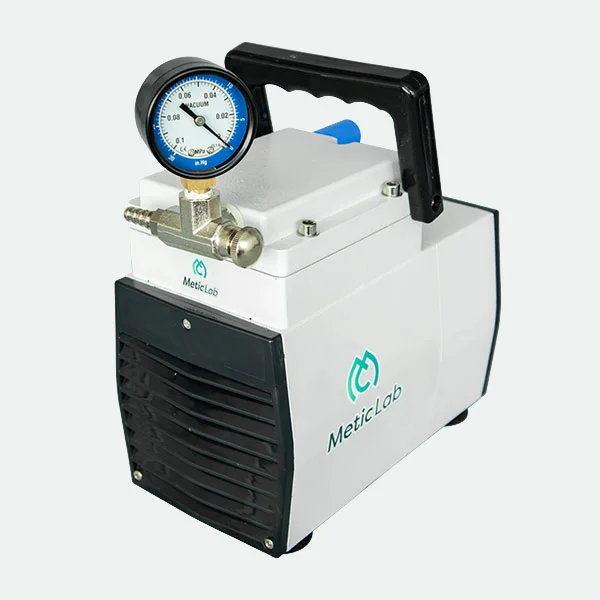
Diaphragm-Vacuum-Pump
WHY IS VACUUM FILTRATION BETTER THAN GRAVITY FILTRATION?
Gravity filtration commonly referred to as simple filtration is a method employed when solid substances are separated from the filtrate (the liquid), for additional work or testing. It is commonly done through simple filtration, where insoluble solid particles are collected using filter paper in a glass funnel, and the liquid goes through by gravity’s pull. Depending on the volume of the substance at hand, filter cones, fluted filters, or filtering pipets can also be used.
Vacuum filtration on the other hand is used to collect a desired solid too. But when compared with gravity filtration, it is much faster in the result because the solution and air are forced through the filter paper through reduced pressure.
Another advantage that vacuum filtration has over gravity filtration is that it is more efficient at separating residual filtrates, resulting in purer solids. It often takes less than one minute with good seals and a viable vacuum source. This process is essential during crystallization, as the liquid may contain soluble impurities (drying agents, unfavorable byproducts, or strange reactants), which could reabsorb into the solid surface when the solvent evaporates.
When gravity filtration is less effective in removing the remaining liquid from the solid on the filter paper, the vacuum filtration method is chosen. Although, vacuum filtration is typically utilized for this task because it is quicker and used for solid disposables. Whenever gravity filtering is slow, for instance, the filter paper’s pore size may be too large when the materials to be filtered have small particle sizes. However, it is important to note that the vacuum filtration method should not be used to filter a solid from a liquid if your outcome is to produce liquid substances, and if the liquid is at low boiling.
WHEN SHOULD VACUUM FILTRATION BE USED?
Vacuum filtration can be used when separating a solid-liquid mixture since it allows you to keep the solid portion. A solid-liquid mixture is poured into a method similar to gravity filtering, with the main distinction being that vacuum is used beneath the funnel to speed up the process.
Vacuum filtration utilizes the strength of a vacuum source and a vacuum pump to draw the fluid through a filter. Hirsch funnels and Buchner funnels, which are the same kind of funnel in two different sizes, are used along with the filter paper. The funnels possess a plate with holes in it, and they are usually employed when the substance to be filtered is in a small volume. If your goal is to collect a solid material through the filtration process, vacuum filtration is a fast and effective method. However, avoid using vacuum filtration if you intend to collect a liquid substance afterward. Any solvent tends to boil off during the reduced-pressure process.
Buncher funnel
Filter paper, Buchner funnel, vacuum filtration, adjoining cones, retort stand set, tubing, vacuum pump, vacuum trap, and perforated stopper are major equipment that is required. These apparatus are put together in a basic vacuum filtration kit – it saves one the stress of finding parts that will fit together, and are a good option for starting in vacuum filtering. On the contrary, you may use a spatula to stir the precipitate on the filter paper for full drying or to remove the precipitate after the filtration is complete.
For some purposes, other separation techniques highlighted above are more successful than filtration. For instance, the filter medium may absorb too much liquid in very small samples where it is crucial to collect the filtrate. In other instances, the filter medium may get overly choked with the substance. Decantation and centrifugation are two other methods for separating particles from liquids. By spinning a sample, centrifugation pushes the heavier solid to the bottom of a container. While in decantation, the liquid is removed from the solid after it has a residual solution by being tapped or poured off. Decantation may be used either before or after centrifugation.
Usually, cold filtration uses very low temperatures often by using an ice bath. Substances such as fatty acid particles become restrained in the mixture as they settle and this allows us to filter them out more easily. Hot filtration, however, is often used for crystalline substances with contaminants by dissolving the crystalline compounds and removing the impurities when the solution is still in liquid form.
Drawing an inference from the thoughts above, vacuum filtration remains one of the most effective techniques that allow for a greater rate of filtration, using a pressure gradient to perform this function. Vacuum filtration concentrates on recovering the solid because the air flow it produces will be significantly dryer than with straightforward gravity filtering. We ensure that the solid, and not the solvent, accounts for the majority of the weights in the filter by drying the solid substantially. In the same vein, vacuum filters have the advantage of offering an adjustable rate depending on the strength of the pump being used to extract air from the Buchner flask.
If you have been looking to get a reliable Vacuum filtration System, you have come to the right place as Meticlab has this equipment available for sale, you can also request a few samples to test.

